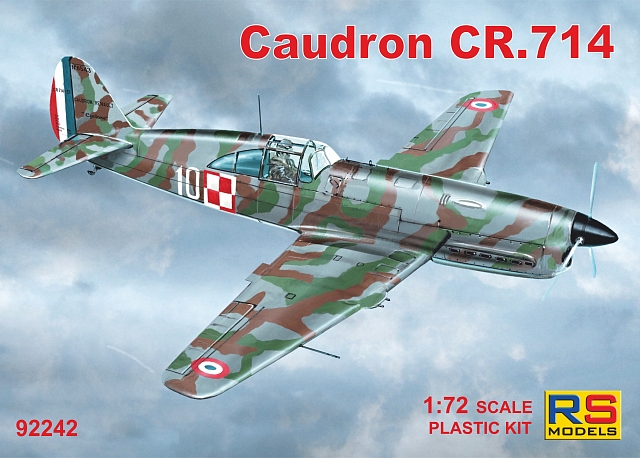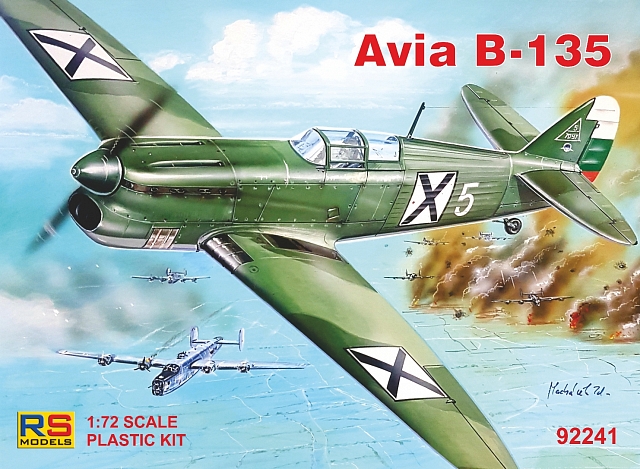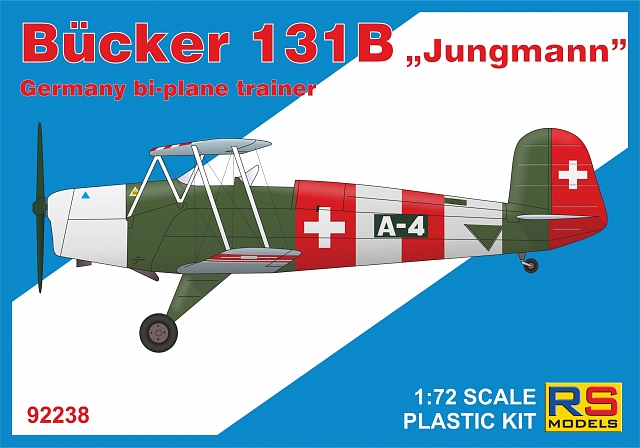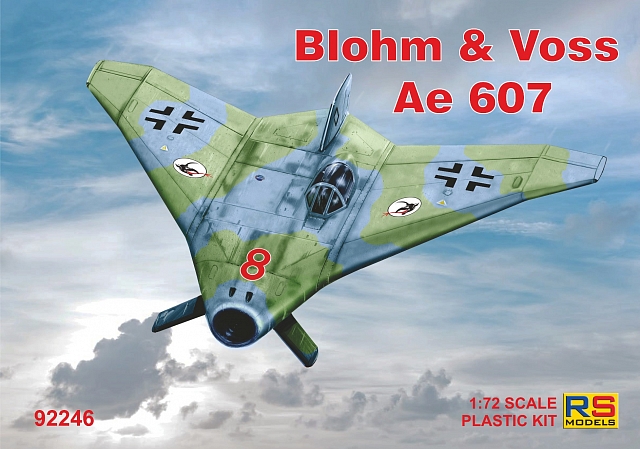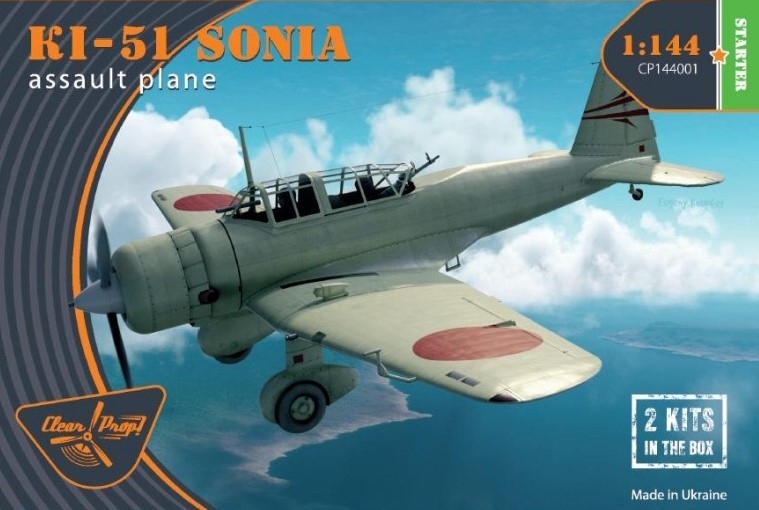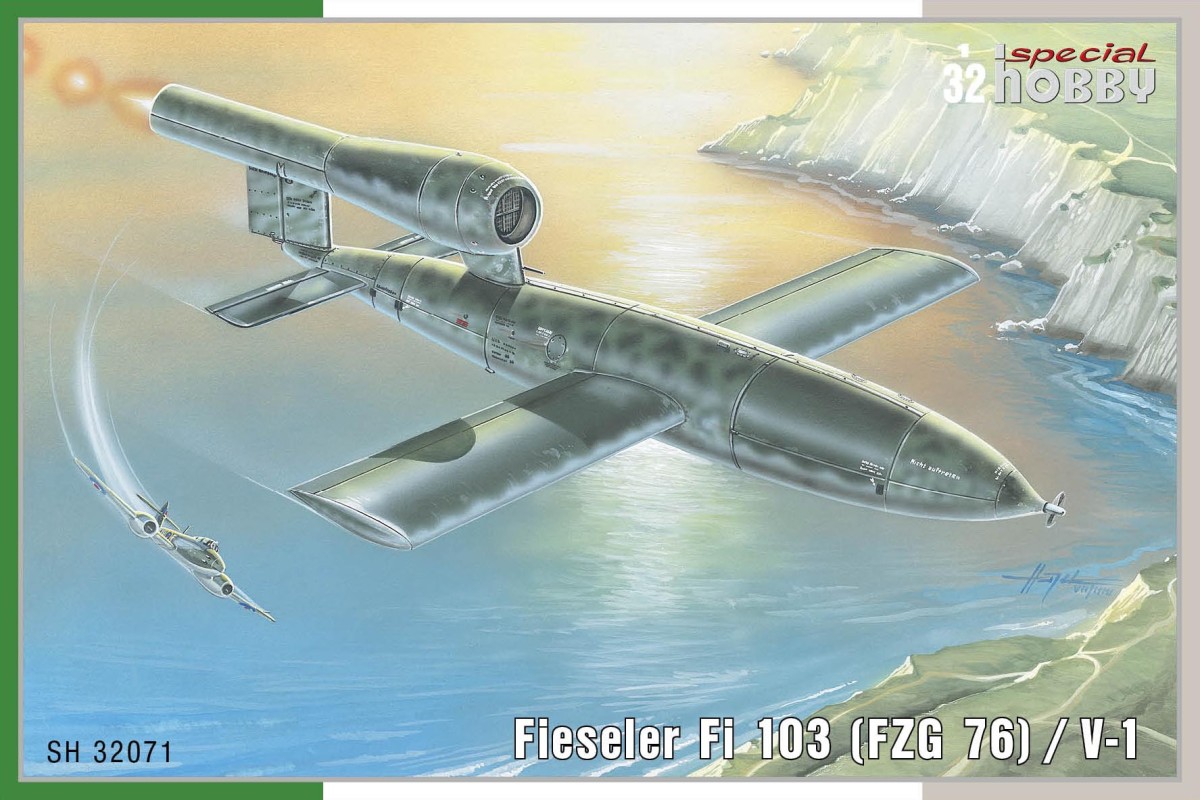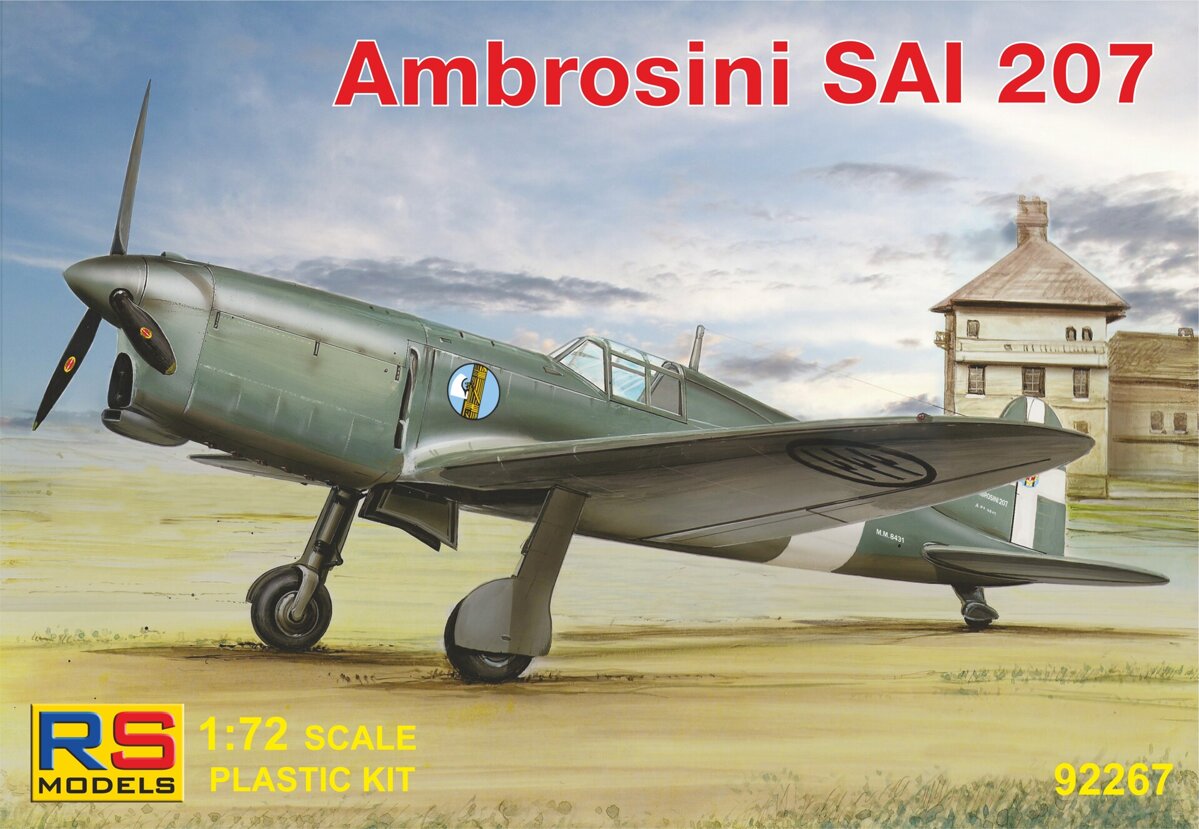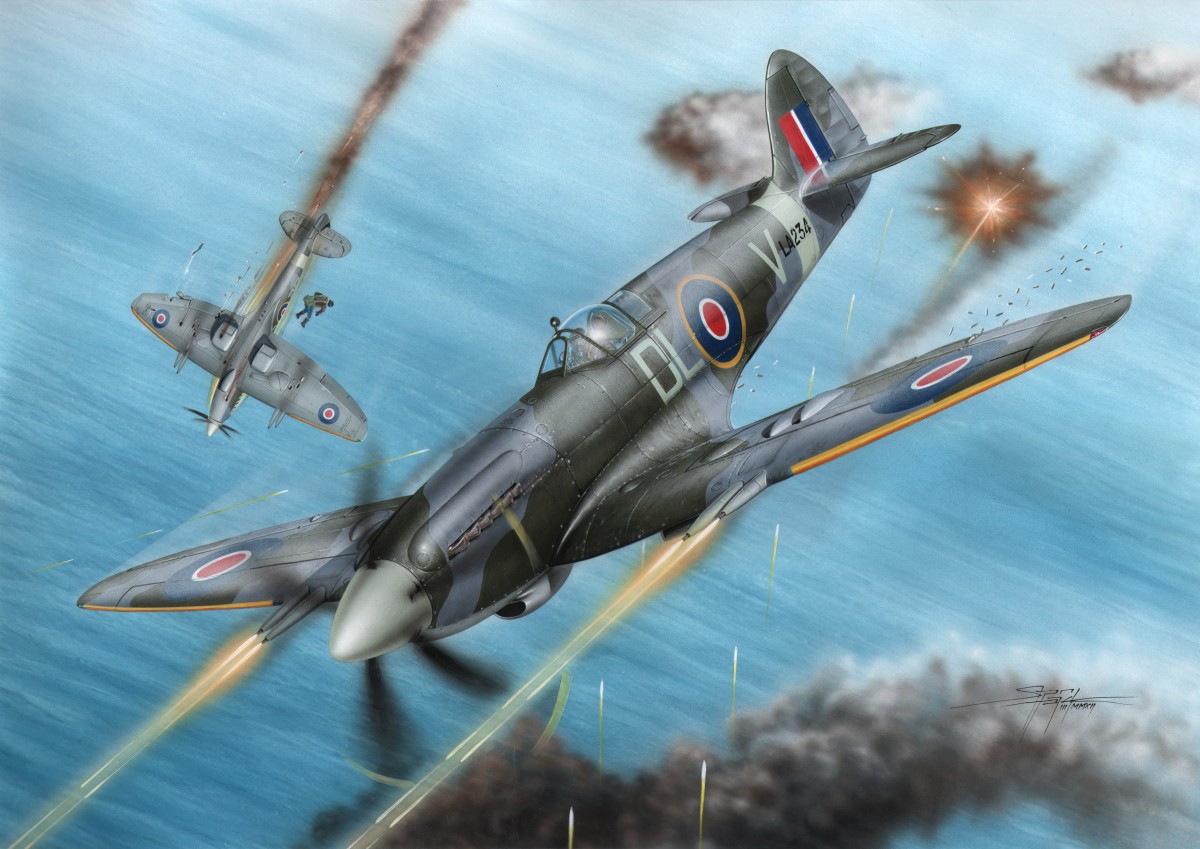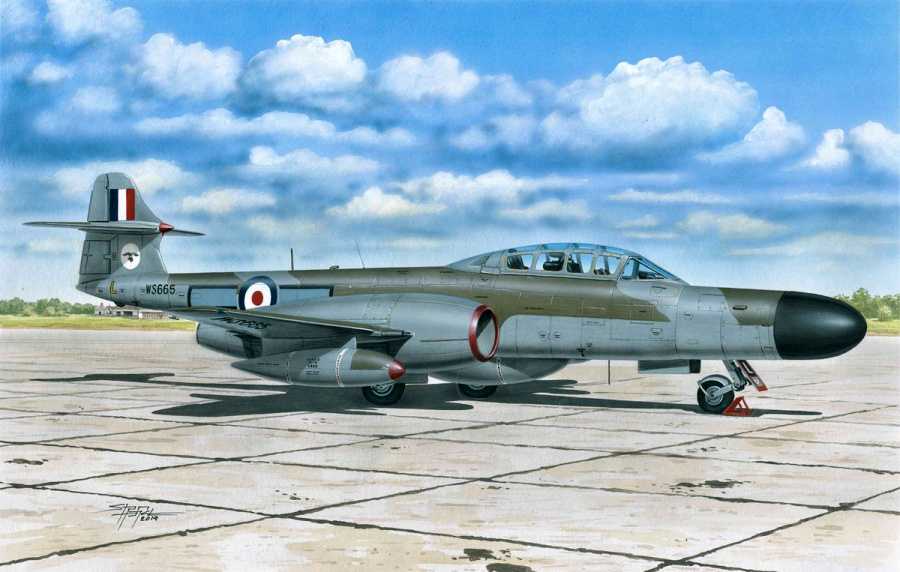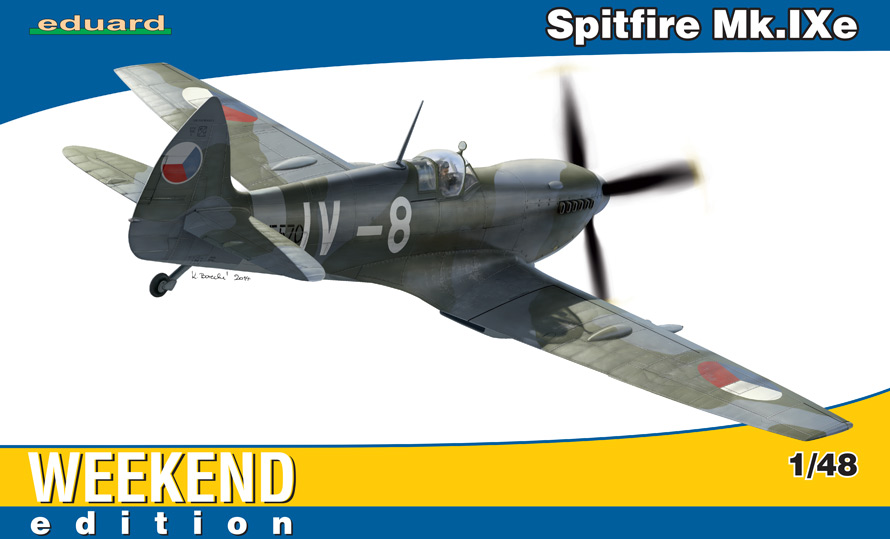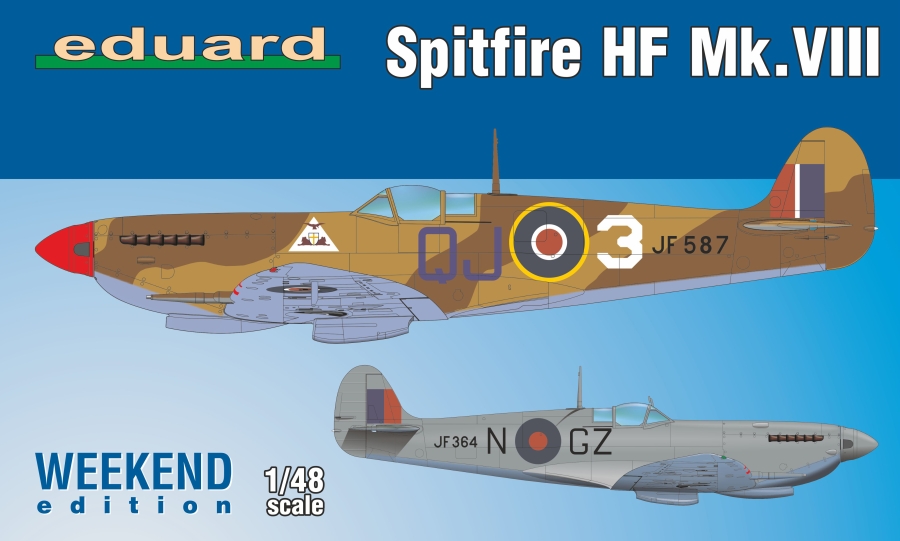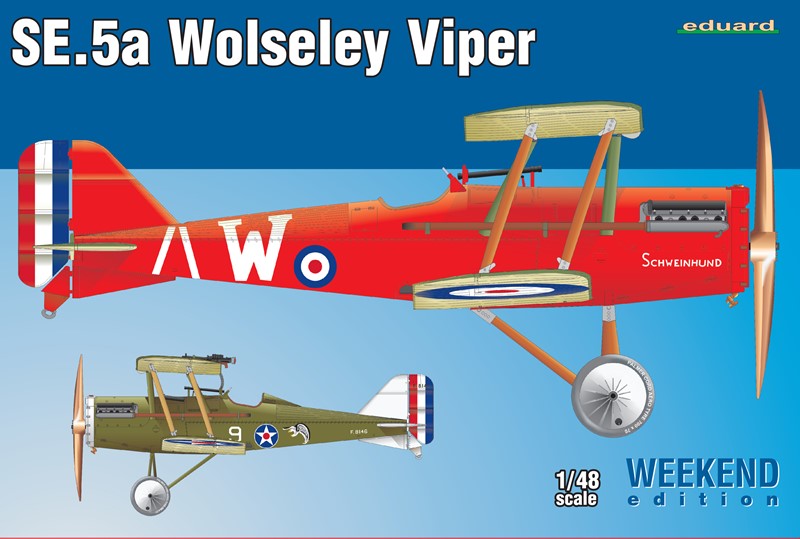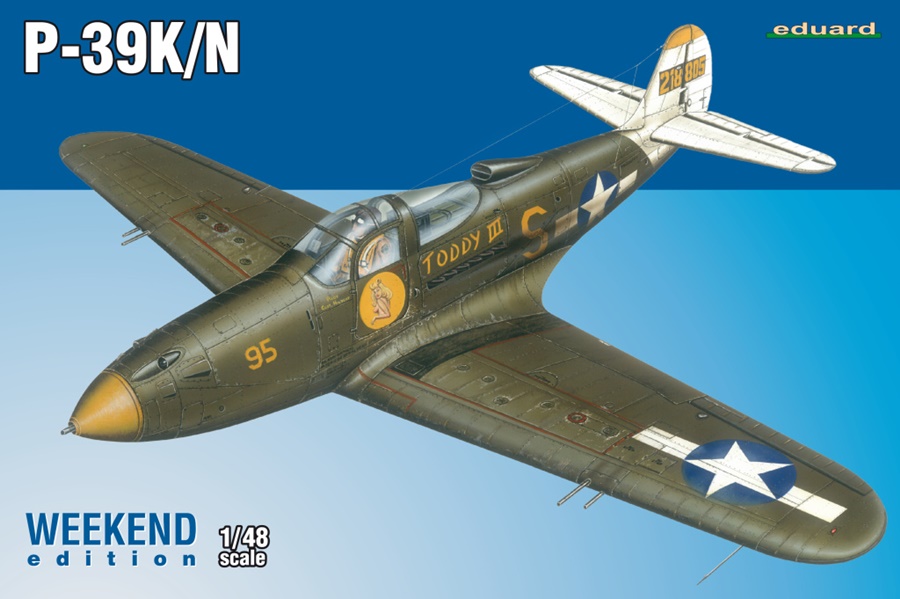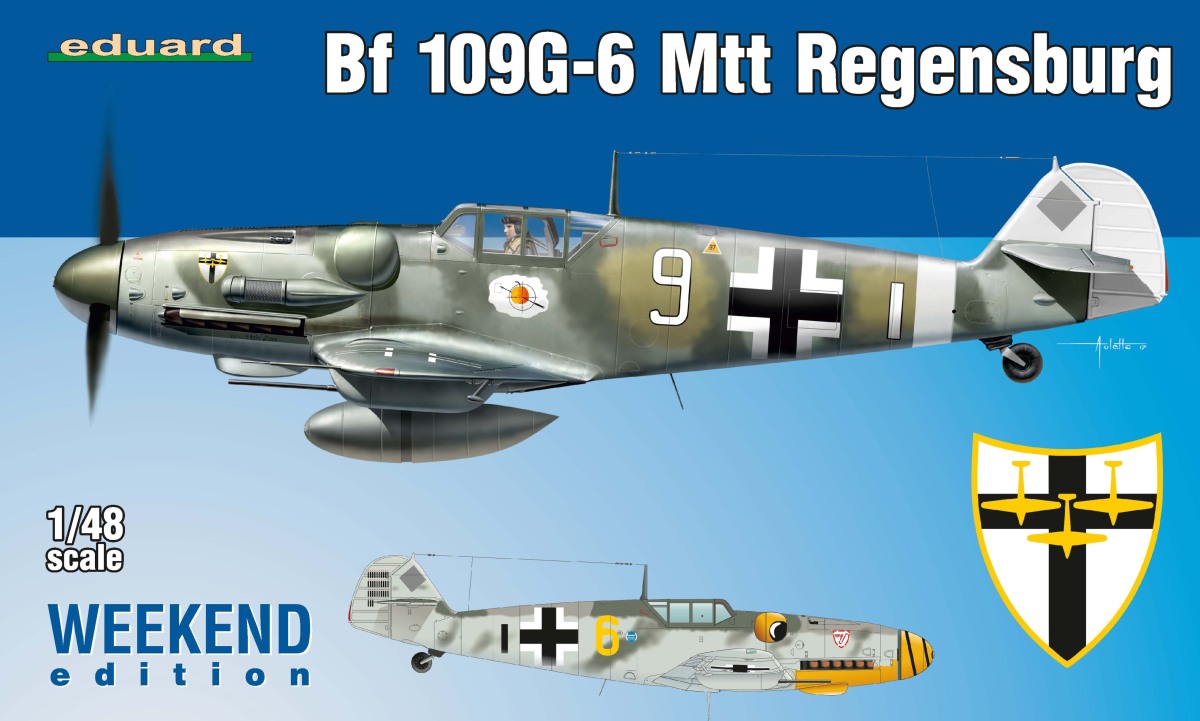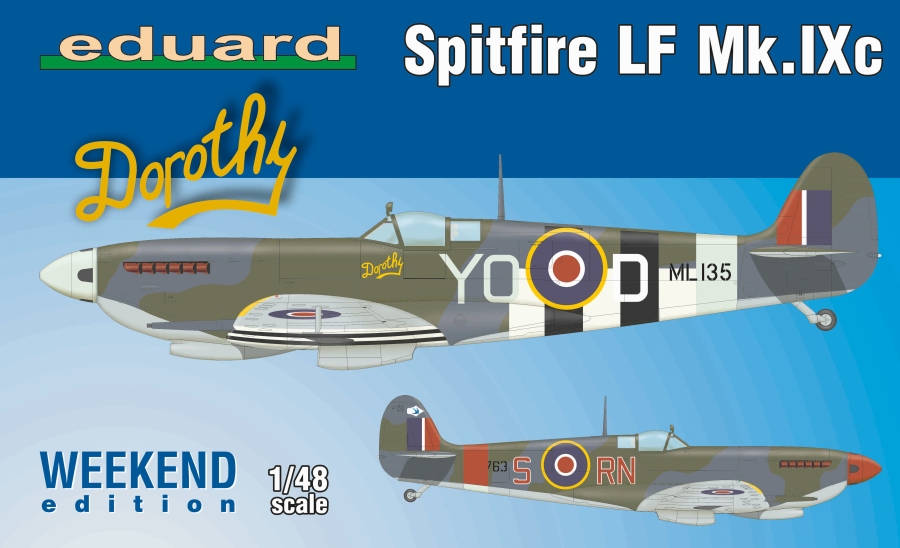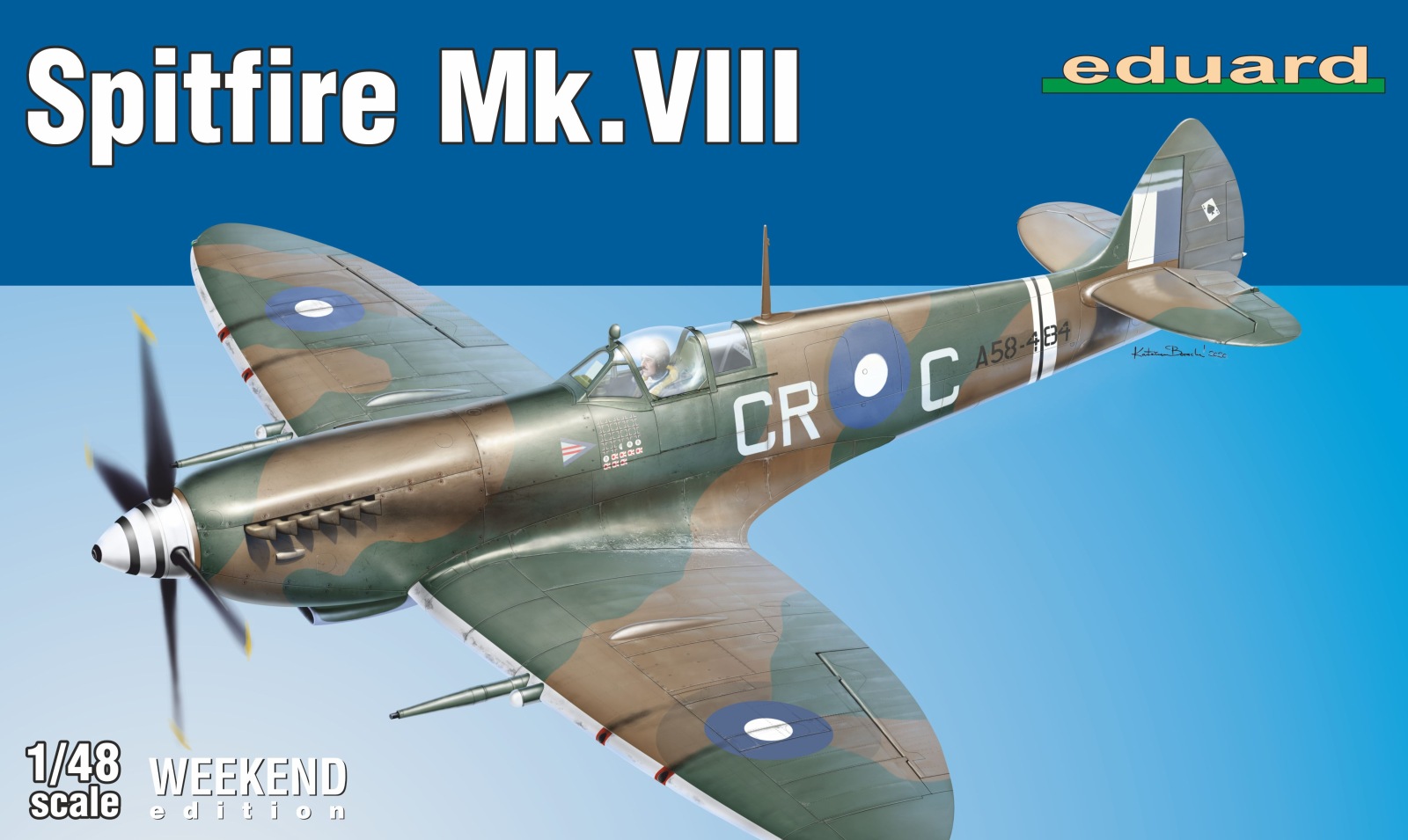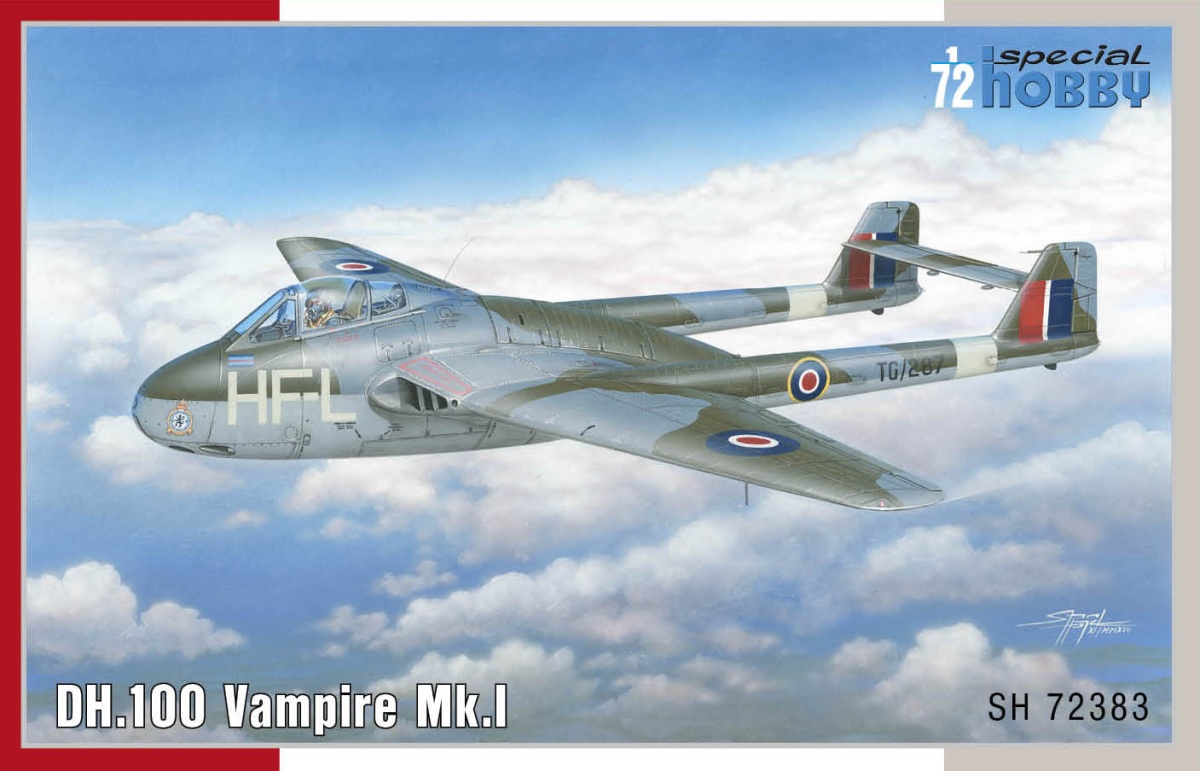Hračky
Celkem 840 produktů
Plastikový model letadla 1/72 Caudron CR.714 C-1 4 decal v. for France, Luftwaffe, Finland. 4 decal variants1. Caudron CR-714, 2nd Esc. GC 1/145, Dreux, A. Niewiara, June 19402. Caudron CR-714, 1st Esc. GC 1/145, Villacoublay, L. Uher, May 19403. Caudron CR-714, Finland, May 19414. Caudron CR-714, test aicraft, Luftwaffe 1940The first prototype was test flown in July 1938 and the first production machine, powered by a Renault 12R-03, was delivered in July 1939. The armament consisted of four 7,5mm MAC 1934 machine guns located in two wing gondolas. Only GC 1-145 was equipped with the Caudron C.714. It was a unit composed of Polish pilots under French command. They fought against the Luftwaffe in spring 1940 and despite the aircraft climbing, the highly battle motivated Polish pilots scored 8 confirmed victories with an overall loss of 7 pilots. Until the fall of France, more than 60 machines were produced and several were in progress. At least one machine was tested by the Luftwaffe.
Plastikový model letadla 1/72 Caudron CR.714 C-1 4 decal v. for France, Luftwaffe, Finland. 4 decal variants1. Caudron CR-714, 2nd Esc. GC 1/145, Dreux, A. Niewiara, June 19402. Caudron CR-714, 1st Esc. GC 1/145, Villacoublay, L. Uher, May 19403. Caudron CR-714, Finland, May 19414. Caudron CR-714, test aicraft, Luftwaffe 1940The first prototype was test flown in July 1938 and the first production machine, powered by a Renault 12R-03, was delivered in July 1939. The armament consisted of four 7,5mm MAC 1934 machine guns located in two wing gondolas. Only GC 1-145 was equipped with the Caudron C.714. It was a unit composed of Polish pilots under French command. They fought against the Luftwaffe in spring 1940 and despite the aircraft climbing, the highly battle motivated Polish pilots scored 8 confirmed victories with an overall loss of 7 pilots. Until the fall of France, more than 60 machines were produced and several were in progress. At least one machine was tested by the Luftwaffe.
Plastikový model letadla 1/72 Avia B-135 3 decal v. for Luftwaffe, Bulgaria. 3 decal variants1. Avia B-135 - flown on 30th March, 1944 by Jordan Ferdinandov, Bulgaria2. Avia B-135 - FVA Flugtechnische Versuchsanstalt Prag, Letnany 19403. Avia B-135 - Aviation school Dolna Mitropolya, Bulgaria, 1944During the summer of 1939, ing. Novotný and his team initiated considerable re-design and refiment of the B.35, and a new prototype, the B-135, was completed late in the year. The fuselage of the B-135 was essentially similar to that of the B.35.3, the HS 12 Ycrs engine and armament of one 20 mm cannon and two 7,7 mm machine guns were retained, as was the hydraulically-recractable main undercarriage members of the B.35.3 prototype, but a controllable-pitchairscrew was introduced, the rudder was enlarged, and an entirely new wing of all-metal construction was fitted.
Plastikový model letadla 1/72 Bücker Bü-131 B 5 decal v. for Switz, Bulgaria, Luftw., Spain, Finland. 5 decal variants1. Bücker 131B, Swiss AF, Lst, FL.Kp.55, Januar 19452. Bücker 131B, Spain AF, Tablada 19373. Bücker 131B, D-EBZE, Berlin Rangdorf 19374. Bücker 131B, Bulgarian AF, Airfield Sofia-Bozuriste 19405. Bücker 131B, Finnish Aeroclub, 1940The Bücker 131 was a biplane for aerobatic and training use. Was designed by Anders J. Anderson and first flew on April 1934. Production of the Bü 131A powered by an 80hp Hirth HM 60R began in the same year. First aircraft were delivered to the Luftwaffe in 1935 year. During 1936, was produced Bü 131B with powerful 105hp Hirth HM 504A-2 engine. Most produced was the version D. The aircraft was used by Luftwaffe as training, also by night ground-attack. Was also exported in many countries - Japan, Switzerland, Spain, Yugoslavia, Romania and Bulgaria. Under licence was built in Japan and after WWII also in Spain-CASA and Czechoslovakia as C-104 trainer with Walter Minor 4-III.
Plastikový model letadla 1/72 Avro Rota C.30A 4 decal v. for Czeczslovak.,RAF, Yugoslavia, Australia. The first production design in the series was the C.30, a radial-engined autogyro with a three-blade, 37 ft (11.3 m) rotor mounted on an aft-leaning tripod, the control column extending into the rear of the two cockpits. The engine was the five-cylinder, 105 hp (78 kW) Armstrong Siddeley Genet Major I used in the C.19 series. The fabric-covered fuselage carried an unbraced tailplane, without elevators but with turned-up tips. The port side of the tailplane had an inverted aerofoil section to counter roll-axis torque produced by the propeller. As with most autogyros, a high vertical tail was precluded by the sagging resting rotor, so the dorsal fin was long and low, extending well aft of the tailplane like a fixed rudder and augmented by a ventral fin. The wide-track undercarriage had a pair of single, wire-braced legs and a small tail wheel was fitted. This model flew in April 1933. It was followed by four improved machines designated C.30P (P here for pre-production) which differed in having a four-legged pyramid rotor mounting and a reinforced undercarriage with three struts per side. The rotor could be folded rearwards for transport. The C.30P used the more powerful (140 hp, 104 kW) seven-cylinder Armstrong Siddeley Genet Major IA radial engine.
Plastikový model letadla 1/72 Avro Rota C.30A 4 decal v. for Czeczslovak.,RAF, Yugoslavia, Australia. The first production design in the series was the C.30, a radial-engined autogyro with a three-blade, 37 ft (11.3 m) rotor mounted on an aft-leaning tripod, the control column extending into the rear of the two cockpits. The engine was the five-cylinder, 105 hp (78 kW) Armstrong Siddeley Genet Major I used in the C.19 series. The fabric-covered fuselage carried an unbraced tailplane, without elevators but with turned-up tips. The port side of the tailplane had an inverted aerofoil section to counter roll-axis torque produced by the propeller. As with most autogyros, a high vertical tail was precluded by the sagging resting rotor, so the dorsal fin was long and low, extending well aft of the tailplane like a fixed rudder and augmented by a ventral fin. The wide-track undercarriage had a pair of single, wire-braced legs and a small tail wheel was fitted. This model flew in April 1933. It was followed by four improved machines designated C.30P (P here for pre-production) which differed in having a four-legged pyramid rotor mounting and a reinforced undercarriage with three struts per side. The rotor could be folded rearwards for transport. The C.30P used the more powerful (140 hp, 104 kW) seven-cylinder Armstrong Siddeley Genet Major IA radial engine.
Plastikový model letadla 1/72 Blohm and Voss Ae 607 4 decal v. for Luftwaffe, Great Britain. Early in 1945, a Blohm & Voss (B&V) aircraft designer called Thieme began work on Drawing Number Ae 607, within the standard drawing numbering system at B&V. His design for a jet fighter was radically different from anything that B&V had done before. A flying wing, it approximated to a 45° delta planform. Reports of its existence were not confirmed until 2017, when the drawing was published. No Project number is recorded for the design and its intended status is unknown.[
Plastikový model letadla 1/72 SB2A-4 Buccaneer ‘US Marines Bomber’ . The SB2A dive bomber aircraft was designed by Brewster during WW2 to be operated primarily from aircraft carriers. Although the type was produced in several various versions, it was used only for training. The British military used the type under their own name of Bermuda. A similar version was also developed for the air force of Dutch East Indies (ML-KNIL), but in the end was not delivered as the Dutch surrendered. The SB2A-3 saw service with the US Navy whilst the dash 4 variety, as brought to you in our recent release, belonged to the US Marines inventory. The decal sheet offers markings for three US Marines airframes bearing both the two- and three-colour schemes and one fictious machine as it might have looked like had it been acquired by the Dutch. US naval dive bomber the SB2A-4 was operated by the Marines decals for three US Marines options and one as would have been flown by Dutch East Indies (they in fact wanted to buy the type) the kit contains resin parts and etches
Plastikový model letadla 1/72 SB2A-4 Buccaneer ‘US Marines Bomber’ . The SB2A dive bomber aircraft was designed by Brewster during WW2 to be operated primarily from aircraft carriers. Although the type was produced in several various versions, it was used only for training. The British military used the type under their own name of Bermuda. A similar version was also developed for the air force of Dutch East Indies (ML-KNIL), but in the end was not delivered as the Dutch surrendered. The SB2A-3 saw service with the US Navy whilst the dash 4 variety, as brought to you in our recent release, belonged to the US Marines inventory. The decal sheet offers markings for three US Marines airframes bearing both the two- and three-colour schemes and one fictious machine as it might have looked like had it been acquired by the Dutch. US naval dive bomber the SB2A-4 was operated by the Marines decals for three US Marines options and one as would have been flown by Dutch East Indies (they in fact wanted to buy the type) the kit contains resin parts and etches
Plastikový model letadla 1/32 Fieseler Fi 103 / V-1. A model of the German unmanned missile, the infamous V-1 flying bomb which was designed and used for terror bombing of London and the UK. When the Allies invaded France, the missiles were also aimed at Antwerp, Liege and Brussels, both from land-based launch sites and aircraft. The kit contains three grey styrene sprues, a decal sheet and full colour instruction leaflet. The decals cater for three machines wearing different styles of camouflage schemes. detailed and extremely accurate model never kitted before in this scale contains not just the missile, but its handling trolley too the camouflage options show different types of colour schemes worn accurate decals with stencils
Plastikový model letadla 1/32 Fieseler Fi 103 / V-1. A model of the German unmanned missile, the infamous V-1 flying bomb which was designed and used for terror bombing of London and the UK. When the Allies invaded France, the missiles were also aimed at Antwerp, Liege and Brussels, both from land-based launch sites and aircraft. The kit contains three grey styrene sprues, a decal sheet and full colour instruction leaflet. The decals cater for three machines wearing different styles of camouflage schemes. detailed and extremely accurate model never kitted before in this scale contains not just the missile, but its handling trolley too the camouflage options show different types of colour schemes worn accurate decals with stencils
Plastikový model letadla 1/72 Ambrosini SAI.207. Model SAI.207 byl vyvinut ze závodního a sportovního jednoplošníku Ambrosini SAI.7 poté, co byl u prototypu Ambrosini SAI.107 prokázán koncept lehkého stíhače. Steffanuti navrhl letoun tak, aby měl lehkou konstrukci a lehkou výzbroj, aby umožňoval použití motorů s nízkým výkonem, aniž by nadměrně snižoval výkon. 3 obtiskové varianty: 1. SAI 207 - MM 8431, seventh production machine 2. SAI 207 - MM 8433, in nothern Italy with German insignia 3. SAI 207 - MM 8436 of the 3 Sormo at Cervateri in Summer 1943 První ze tří prototypů byl dokončen a letěl na podzim roku 1940 jako jediný SAI.107, což byl minimální vývojový stíhací vývoj SAI.7, se stejnými rozměry, kromě délky, ve výšce 8,02 m (26,31 ft) a motor Isotta-Fraschini Gamma o výkonu 402,7 kW (540 k). Sai.107, vážící pouze 1 000 kg (2205 lb), dosáhl ve zkouškách prováděných ve výzkumném ústavu Guidonia rychlosti 563 km / h (350 mph) a manévrovatelnost se ukázala jako vynikající. SAI.107 byl ztracen spolu s pilotem Arturem Ferrarinem při havárii dne 18. července 1941.
Plastikový model letadla 1/72 A.W. Meteor NF MK.12. The final generation of the Meteor jet fighters was produced by Armstrong Whitworth. Unlike the earlier versions, these were two-seater, night and all-weather fighter machines equipped with a radar in the nose. In the early stages of the Cold War, they defended the UK against the threat of Soviet bombers carrying nuclear weapons. The Meteor Mk.12 version was fitted with a US-manufactured APS-21 radar known as the AI Mk.21 in RAF service. The best 1/72 NF Meteor kits currently available (Matchbox kits were released in 1987)Highly detailed small partsFour RAF marking schemes
Plastikový model letadla 1/72 A.W. Meteor NF MK.12. The final generation of the Meteor jet fighters was produced by Armstrong Whitworth. Unlike the earlier versions, these were two-seater, night and all-weather fighter machines equipped with a radar in the nose. In the early stages of the Cold War, they defended the UK against the threat of Soviet bombers carrying nuclear weapons. The Meteor Mk.12 version was fitted with a US-manufactured APS-21 radar known as the AI Mk.21 in RAF service. The best 1/72 NF Meteor kits currently available (Matchbox kits were released in 1987)Highly detailed small partsFour RAF marking schemes
1/48 Spitfire Mk.IXe. Scale plastic kit Spitfire Mk.IXe in 1/48 scale.British WWII fighter, released in Weekend Editionplastic parts: EduardNo. of decal options: 1Decals: EduardPE parts: nopainting mask: noResin parts: noMarking option:LF Mk.IXe, TE570, Letecký pluk 7, airfield Praha-Kbely, september 1946Model length: 202 mmWingspan: 235 mmPlastic parts: 207Made in Czech Republic.
1/48 Spitfire Mk.IXe. Scale plastic kit Spitfire Mk.IXe in 1/48 scale.British WWII fighter, released in Weekend Editionplastic parts: EduardNo. of decal options: 1Decals: EduardPE parts: nopainting mask: noResin parts: noMarking option:LF Mk.IXe, TE570, Letecký pluk 7, airfield Praha-Kbely, september 1946Model length: 202 mmWingspan: 235 mmPlastic parts: 207Made in Czech Republic.
Plastikový model letadla 1/72 DH.100 Vampire Mk.I RAF, RAAF and Armée de l. The kit’s plastic parts come on three grey styrene sprues and two clear sprues which are accompanied by a fret of photo-etches. The first clear sprue offers the standard, late type of the clear hood and also the original, early style canopy typical for the first Mk.Is. This part, however, was not manufactured to our standards, which we regret of course, and thus we have decided to rework the design completely and produce a second sprue with much more exact rendition of the early hood. The decal sheet contains markings for three RAF machines which differ by having various national markings on them, another machine with serial A78-1which was flown by the RAAF down under and the final option brings a very special French machine, in fact a remotely controlled drone named Porthos Originally, the Vampire Mk.I kit was to offer schemes for just two operators of the type, the RAF and RAAF. It has been decided, however, that a new marking option will be offered in this boxing to make it more attractive for a wider range of modellers. The new addition to the kit is a quite eye-catching machine wearing French colours and the title of this boxing has also been updated.
